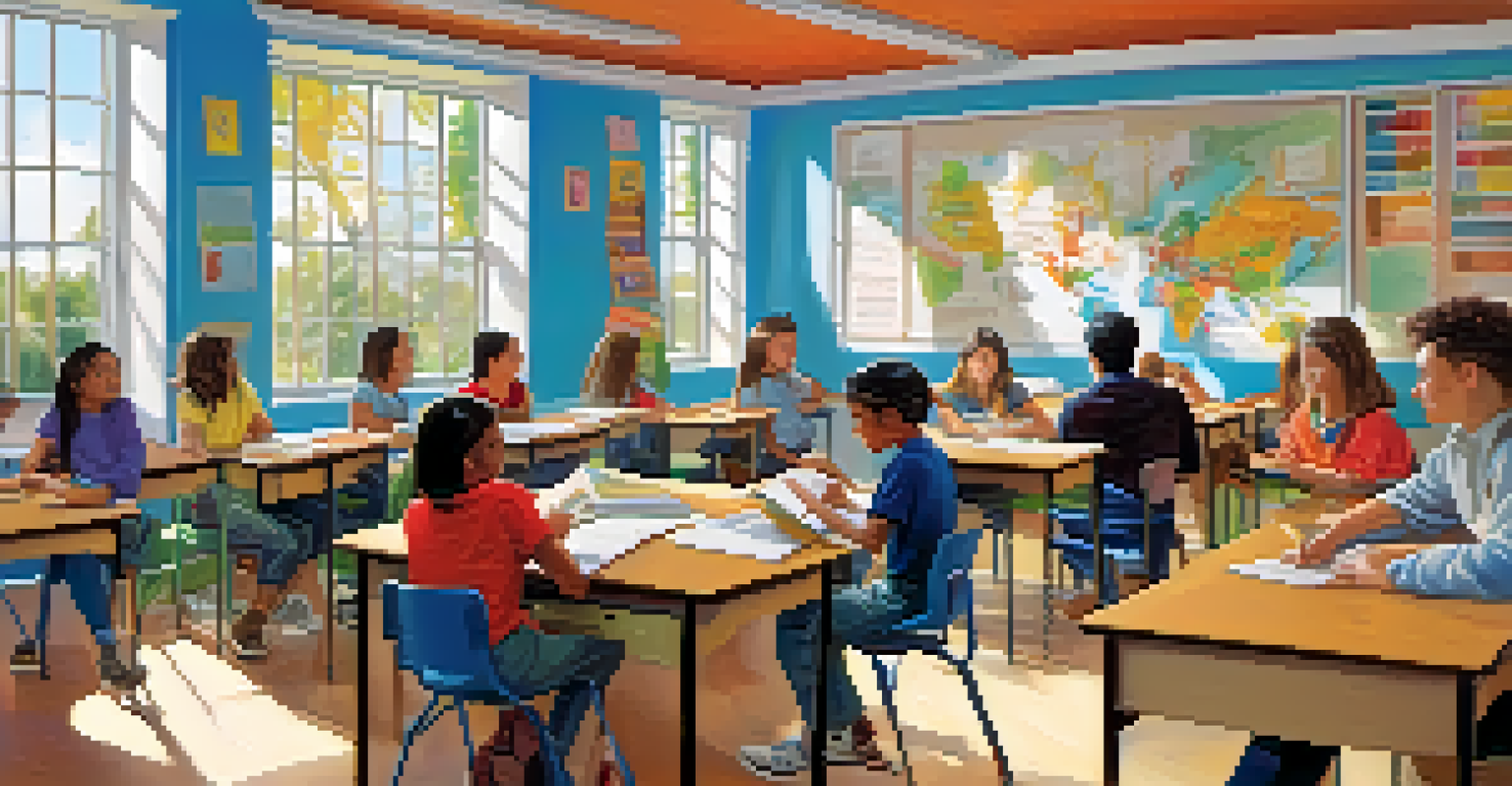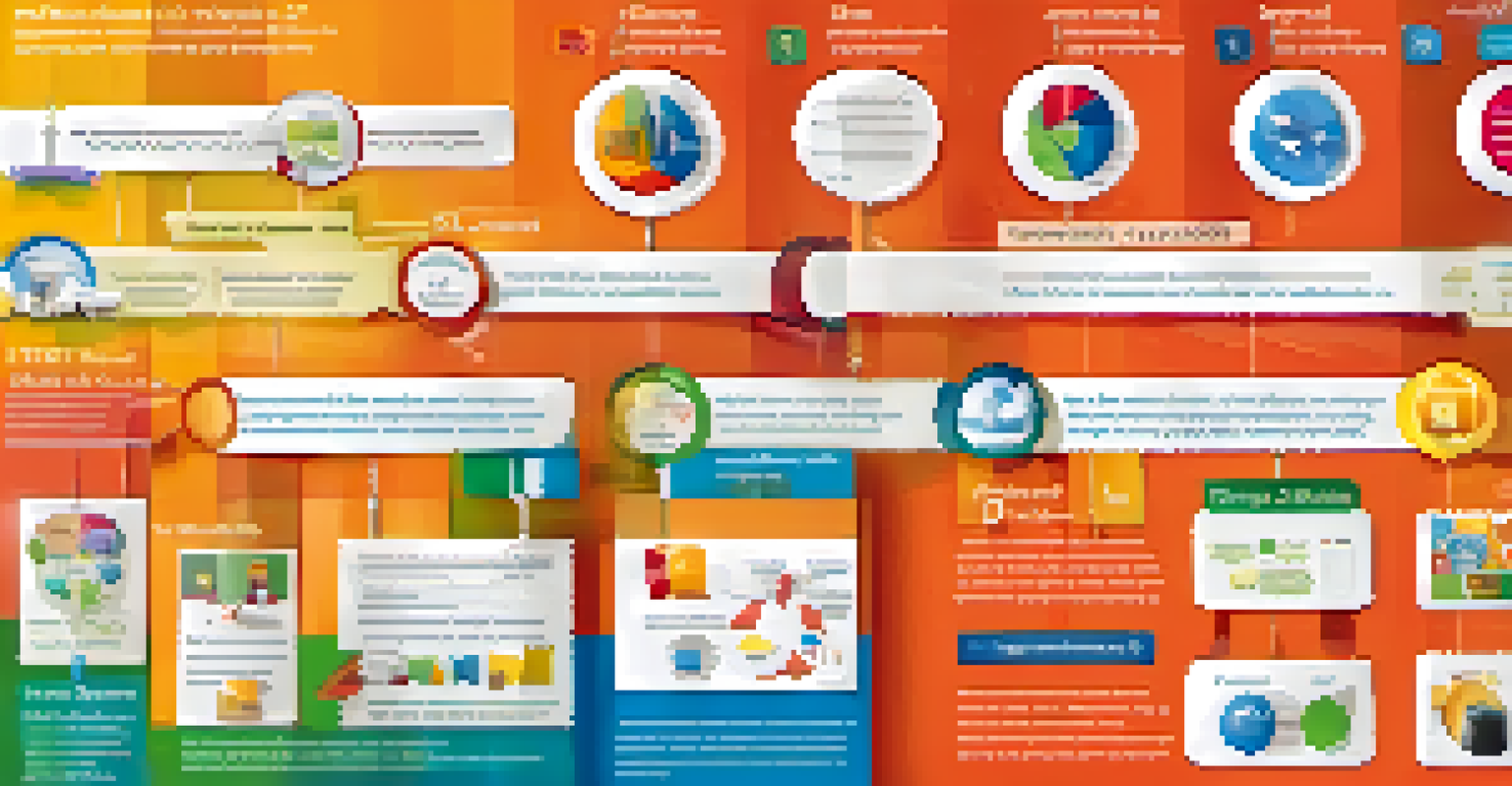Flipped Classroom: Encouraging Lifelong Learning Habits

Understanding the Flipped Classroom Concept
The flipped classroom is an innovative teaching model that flips traditional learning on its head. Instead of a teacher delivering lectures in class, students engage with instructional content at home, often through videos or reading materials. This approach allows classroom time to be dedicated to interactive activities, discussions, and hands-on learning, fostering deeper understanding.
Education is not the learning of facts, but the training of the mind to think.
By moving lectures outside of the classroom, students can learn at their own pace, pausing or replaying content as needed. This flexibility caters to different learning styles and paces, making education more personalized. It’s like having a remote control for your education, allowing you to rewind and replay the parts you need more time to digest.
Ultimately, the flipped classroom encourages students to take responsibility for their learning. It shifts the focus from passive listening to active engagement, setting the stage for lifelong learning habits that extend beyond school.
Encouraging Active Learning in the Classroom
With the foundational knowledge acquired at home, classroom time transforms into an active learning environment. Teachers can facilitate discussions, group work, and projects that challenge students to apply what they've learned. It’s akin to a cooking class where you’ve watched the recipe video at home, and now you’re in the kitchen, actually cooking with guidance.

This active engagement not only solidifies understanding but also enhances critical thinking and problem-solving skills. Students are encouraged to ask questions, collaborate with peers, and explore topics in-depth, which can lead to more meaningful learning experiences. Such an environment nurtures curiosity and fosters a love for learning.
Active Learning Transforms Classrooms
The flipped classroom model shifts lectures outside of class, allowing for interactive, hands-on experiences that deepen understanding.
Moreover, it prepares students for real-world scenarios where collaboration and communication are key. By participating in these interactive sessions, students learn to articulate their thoughts and listen to others, essential skills for lifelong learning.
Promoting Self-Directed Learning
One of the standout features of the flipped classroom is its emphasis on self-directed learning. Students take charge of their educational journey, deciding how and when to engage with the material. This autonomy mirrors real-life learning situations, where individuals often have to seek out information and skills independently.
The beautiful thing about learning is that no one can take it away from you.
As students become accustomed to this responsibility, they develop strong organizational and time management skills. They learn to set goals, prioritize tasks, and evaluate their own progress. Think of it like training for a marathon; the more you practice and manage your training schedule, the better prepared you are for the race.
This self-directed approach not only boosts confidence but also instills a sense of ownership over one’s education. Students who master this skill are more likely to pursue learning opportunities throughout their lives, whether in their careers or personal interests.
Cultivating a Growth Mindset
The flipped classroom naturally fosters a growth mindset, where students learn to view challenges as opportunities for growth. In this model, mistakes are not seen as failures but as valuable learning experiences. When students engage with content at their own pace, they are less likely to fear making errors during class activities.
Teachers can encourage this mindset by emphasizing effort and improvement rather than just grades. By celebrating progress, no matter how small, students learn that persistence pays off. It’s much like learning to ride a bike; each wobble and fall is a step closer to mastering balance and control.
Encouraging Self-Directed Learning
Students are empowered to take charge of their education, fostering organizational skills and a sense of ownership over their learning journey.
Adopting a growth mindset empowers students to tackle complex subjects with resilience. This attitude not only benefits them academically but also equips them with the mental tools needed for lifelong learning, making them more adaptable in life.
Building Collaborative Skills Among Peers
Collaboration is a cornerstone of the flipped classroom experience. By engaging in group activities, students learn how to work effectively with diverse peers, sharing knowledge and perspectives. This collaborative spirit mirrors the team dynamics often found in professional settings, preparing students for future workplace environments.
Through group discussions and projects, students develop essential communication skills, learning to articulate their ideas clearly and listen actively to others. It’s like being part of a band; each musician plays a unique role, and together, they create harmony. This collaborative effort reinforces the idea that learning is a shared journey.
Moreover, these collaborative experiences foster empathy and respect for differing viewpoints. As students navigate group dynamics, they build social skills that are crucial not just in academics but also in their personal and professional lives.
Enhancing Digital Literacy Skills
In today’s digital age, the flipped classroom helps students enhance their digital literacy skills. By utilizing online resources like videos, articles, and educational platforms, students become adept at navigating the digital landscape. This is crucial, as digital literacy is an essential competency in virtually every field today.
Students learn to discern credible sources from unreliable ones, a skill that is increasingly important in an era of information overload. They become more comfortable using technology for learning, which can translate into improved tech-savviness in their future careers. It’s like learning to read a map in a new city; the more you practice, the easier it becomes to find your way.
Collaboration Enhances Learning Skills
Group activities in the flipped classroom promote collaboration and communication skills, preparing students for teamwork in their future careers.
As they become more proficient with digital tools, students are better prepared for a workforce that demands tech skills. This foundational knowledge not only helps them in their studies but also empowers them to pursue lifelong learning opportunities online.
Adapting to Different Learning Styles
The flipped classroom model is particularly beneficial in accommodating diverse learning styles. By providing various resources and allowing students to choose how they engage with the material, this approach caters to visual, auditory, and kinesthetic learners alike. It’s reminiscent of a buffet where everyone can pick what they like best.
Students who thrive on visual aids can benefit from videos and infographics, while those who prefer reading can delve into articles and texts. This flexibility ensures that all learners have the opportunity to grasp concepts in ways that resonate with them. It’s about creating a personalized learning experience that respects individual preferences.

Ultimately, this adaptability leads to improved retention and understanding of the material. When students can learn in ways that suit them, they are more likely to stay engaged and motivated, fostering a lifelong love for learning.